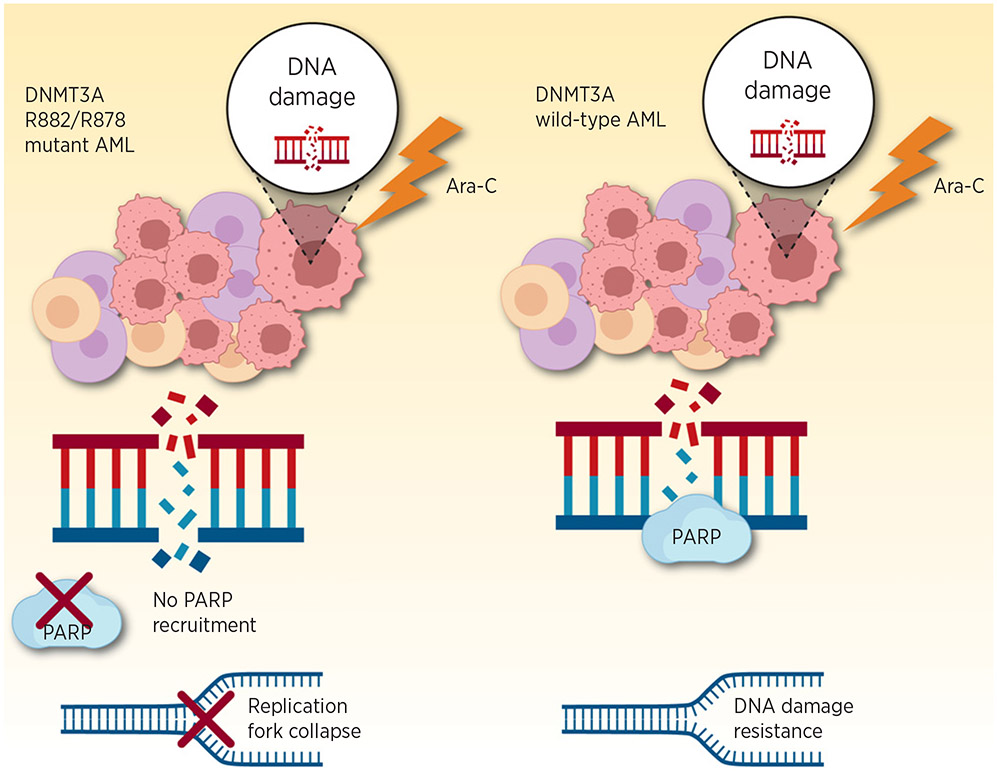Figure 1.
Graphical depiction of differential DNA damage response of DNMT3A-mutant leukemia (left) and DNMT3A wild-type leukemia (right) in response to cytarabine (Ara-C). While the wild-type leukemia cells are able to recruit PARP to repair single-strand DNA breaks, the DNMT3A-mutant leukemia is unable to do so. The result is DNA replication form collapse and increased sensitivity to the chemotherapeutic agent. Adapted from an image created with BioRender.com.

